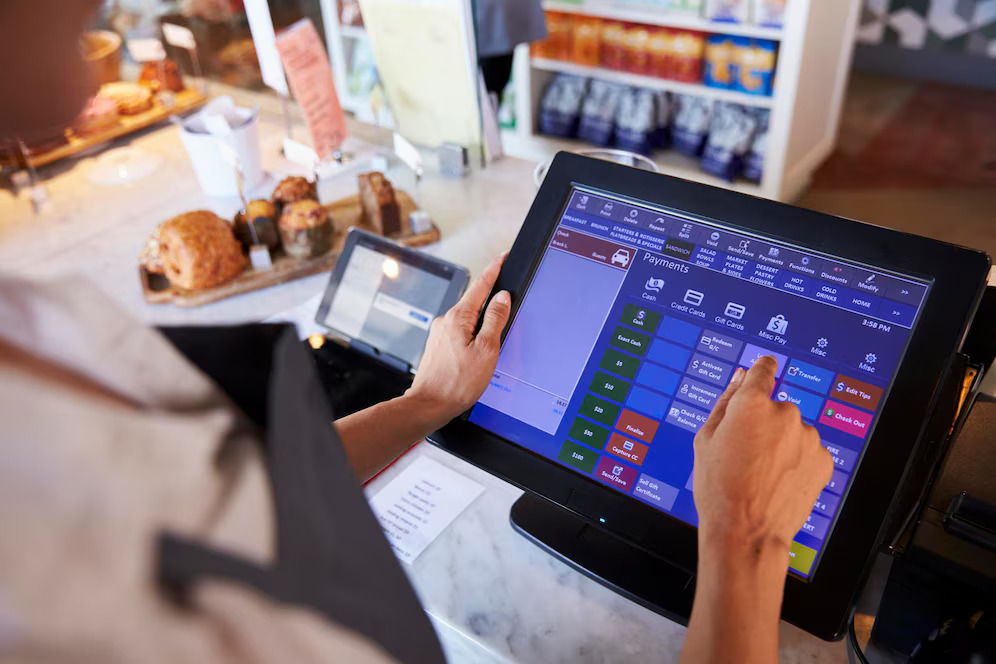The Role of Restaurant POS in Contactless Dining
In the wake of the COVID-19 pandemic, the restaurant industry has seen a seismic shift in operations, with contactless dining...

In the wake of the COVID-19 pandemic, the restaurant industry has seen a seismic shift in operations, with contactless dining becoming the new standard. Diners are now prioritizing safety, hygiene, and convenience more than ever before. At the forefront of this transformation is the Restaurant POS (Point of Sale) system. No longer just a tool for processing payments, the modern Restaurant POS has evolved into a comprehensive Restaurant Software solution that facilitates contactless dining while enhancing the overall guest experience.
This article explores the vital role of Restaurant POS in the rise of contactless dining, the features driving this change, and how restaurants can leverage these systems to thrive in a post-pandemic world.
The Evolution of Restaurant POS in the Era of Contactless Dining
Restaurant POS systems have undergone significant evolution over the past decade. Initially designed to manage sales and print receipts, today’s Restaurant POS solutions are intelligent platforms capable of integrating with various technologies and third-party applications.
With the advent of contactless dining, the demand for flexible, mobile, and cloud-based POS systems has skyrocketed. The traditional setup involving physical menus, paper receipts, and manual order-taking is giving way to digital menus, mobile ordering, and touchless payments—all facilitated by robust Restaurant Software.
Key Features of Restaurant POS Enabling Contactless Dining
Modern Restaurant POS systems are packed with features that support the contactless dining experience. Here are some of the most impactful functionalities:
1. QR Code Menus and Ordering
One of the most significant changes in contactless dining is the adoption of QR code menus. Restaurant POS systems now allow businesses to generate unique QR codes that customers can scan to view the menu on their smartphones.
Some systems go a step further by enabling guests to place orders directly from their mobile devices. This eliminates the need for physical menus and minimizes interactions between staff and guests, promoting a safer dining environment.
2. Contactless Payments
Modern Restaurant POS systems support a wide range of contactless payment methods, including NFC-enabled cards, mobile wallets (Apple Pay, Google Pay), and QR code payments. These options reduce the need for physical card swipes or cash handling.
Contactless payments are not only safer but also faster, improving table turnover and customer satisfaction. With POS-integrated payment gateways, restaurants can securely process transactions while maintaining compliance with data protection standards.
3. Mobile and Tablet POS Devices
Mobile POS solutions allow servers to carry tablets or smartphones equipped with POS software to take orders and accept payments tableside. This reduces the need for guests to interact with a central POS terminal or wait in line at a counter.
In fast-casual or quick-service environments, this functionality streamlines operations, boosts order accuracy, and supports a smoother customer journey—all while minimizing contact.
4. Online Ordering Integration
Online ordering has become an essential service for restaurants offering dine-in, takeout, and delivery. A modern Restaurant POS integrates seamlessly with online ordering platforms, syncing orders directly into the system and sending them to the kitchen display system (KDS).
This real-time synchronization helps eliminate manual entry errors, speeds up order fulfillment, and provides a consistent experience whether the customer is dining in or ordering remotely.
5. Digital Receipts
Another key element of contactless dining is the shift to digital receipts. Customers can receive their receipts via email or SMS, reducing the need for printed copies. This not only supports hygiene but also contributes to sustainability.
Digital receipts, when tied into CRM functionalities within Restaurant Software, can be used for marketing, customer feedback, and loyalty program integration.
Benefits of Contactless Dining Powered by Restaurant POS
By leveraging Restaurant POS systems, restaurants can unlock a multitude of benefits that align with the demands of today’s diners.
Improved Health and Safety
The core benefit of contactless dining is enhanced health and safety. By reducing the need for physical interactions, restaurants can minimize the risk of virus transmission among guests and staff.
Restaurant POS systems facilitate this by supporting digital interactions at every touchpoint—from menu browsing to order placement and payment.
Enhanced Customer Experience
Convenience is a significant factor influencing customer satisfaction. POS-enabled contactless dining allows guests to control their experience. Whether it’s ordering at their own pace or using their preferred payment method, customers appreciate the autonomy and speed.
Integrated Restaurant Software ensures that all systems—ordering, kitchen, and payments—work together to deliver a seamless dining experience.
Increased Operational Efficiency
With fewer manual steps and more automation, restaurant operations become more efficient. Orders go directly to the kitchen, reducing the chance of human error. Payments are processed faster, and staff can focus on delivering exceptional service rather than managing logistics.
Restaurant POS systems that integrate inventory management, employee scheduling, and reporting provide an all-in-one solution that boosts productivity.
Data Collection and Personalization
Every digital interaction captured by the Restaurant POS system provides valuable data. Restaurants can analyze purchasing patterns, peak times, and customer preferences. This data can be used to personalize marketing efforts, optimize menus, and improve service.
Integrated Restaurant Software with CRM capabilities enables targeted promotions and loyalty rewards, enhancing customer retention.
Overcoming Challenges in Contactless Dining
While the benefits are clear, adopting contactless dining via POS systems is not without challenges. Some customers, particularly older demographics, may be less comfortable with digital technology. To mitigate this, restaurants should offer alternative options and provide friendly assistance.
Staff training is also critical. Employees need to be familiar with the POS system’s features and capable of guiding customers through the process. Additionally, ensuring a reliable internet connection and maintaining data security are essential for smooth operations.
Future Trends: What’s Next for Restaurant POS and Contactless Dining?
The role of Restaurant POS in contactless dining will continue to evolve as technology advances. Here are a few future trends to watch:
1. Voice-Activated Ordering
Voice recognition technology is making its way into the dining space. Future POS systems may allow customers to place orders using voice commands, further minimizing contact and enhancing accessibility.
2. AI-Driven Recommendations
Artificial Intelligence integrated into Restaurant POS systems can analyze customer data in real-time to provide personalized menu suggestions and upsell opportunities, improving customer engagement and increasing average check size.
3. Blockchain for Payments and Loyalty
Blockchain technology can add an extra layer of security and transparency to payments and loyalty programs. POS systems may use blockchain to securely store transaction data and enable seamless loyalty point redemption.
4. Augmented Reality (AR) Menus
Some forward-thinking restaurants are experimenting with AR technology that allows customers to view 3D representations of menu items through their smartphones. Integrated with Restaurant Software, AR menus can enrich the dining experience while maintaining contactless interactions.
5. Integration with Smart Kitchen Equipment
The synergy between Restaurant POS systems and IoT-enabled kitchen appliances will further streamline operations. Orders placed digitally can be transmitted to smart ovens or grills for automated preparation, enhancing speed and consistency.
Implementing a Contactless Dining Strategy with Restaurant POS
To successfully implement contactless dining, restaurants should evaluate their current POS infrastructure and upgrade to systems that support mobile, cloud-based, and integrated solutions.
Key steps include:
- Choosing a Restaurant POS provider that offers comprehensive Restaurant Software with contactless capabilities.
- Training staff thoroughly on new features and protocols.
- Communicating clearly with customers about contactless options and how to use them.
- Ensuring robust cybersecurity measures are in place.
- Regularly analyzing data to refine and improve the contactless dining experience.
Conclusion
The Restaurant POS is no longer just a transactional tool—it is the backbone of modern dining operations. In a world where safety, convenience, and efficiency are paramount, Restaurant POS systems enable restaurants to offer contactless dining experiences that meet and exceed customer expectations.
By embracing this technology, restaurants not only safeguard the health of their guests and staff but also position themselves for long-term success. With the right Restaurant Software, operators can turn every digital interaction into an opportunity to enhance service, build loyalty, and thrive in a rapidly changing landscape.
As contactless dining becomes the norm rather than the exception, the importance of a robust, adaptable Restaurant POS system will only continue to grow.



